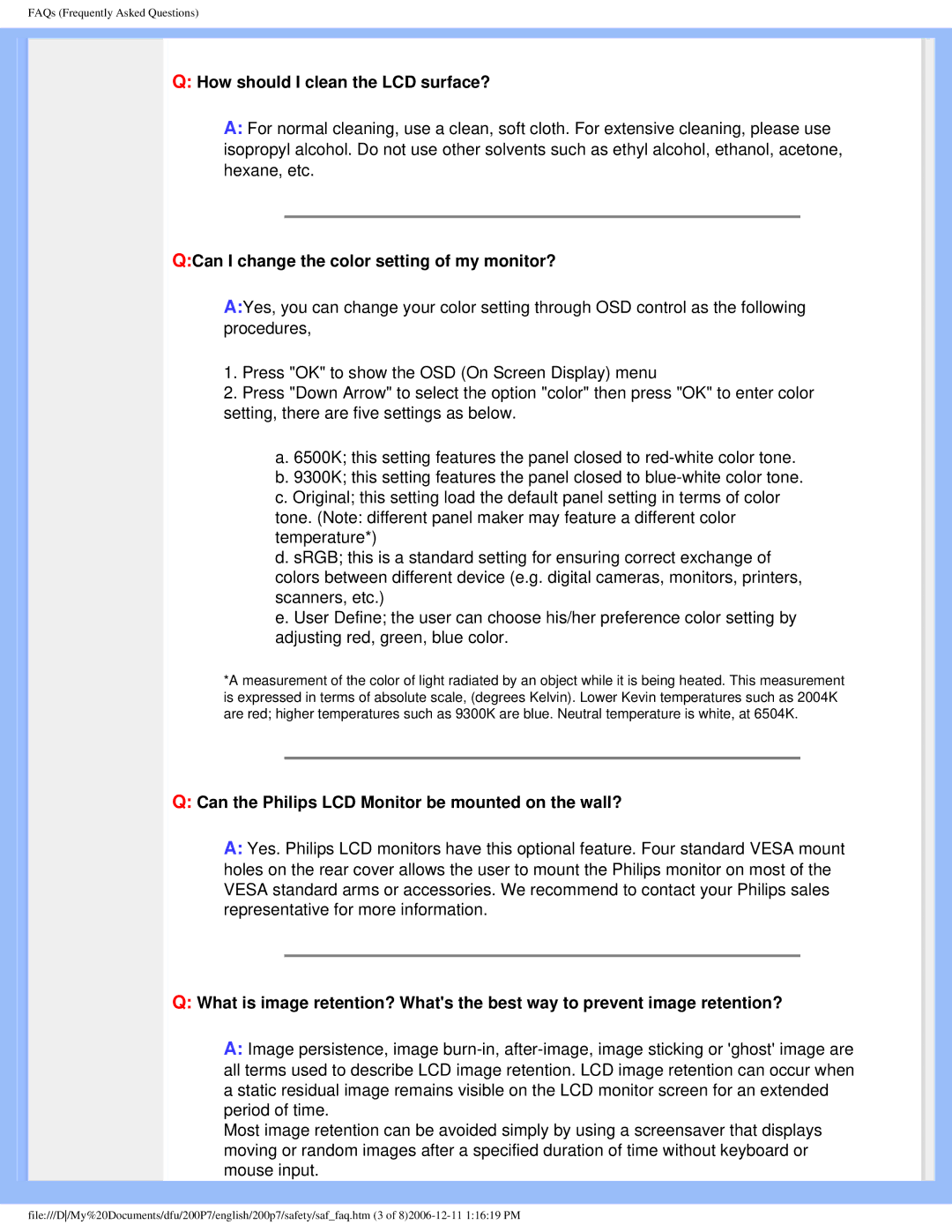
FAQs (Frequently Asked Questions)
Q:How should I clean the LCD surface?
A:For normal cleaning, use a clean, soft cloth. For extensive cleaning, please use isopropyl alcohol. Do not use other solvents such as ethyl alcohol, ethanol, acetone, hexane, etc.
Q:Can I change the color setting of my monitor?
A:Yes, you can change your color setting through OSD control as the following procedures,
1.Press "OK" to show the OSD (On Screen Display) menu
2.Press "Down Arrow" to select the option "color" then press "OK" to enter color setting, there are five settings as below.
a.6500K; this setting features the panel closed to
b.9300K; this setting features the panel closed to
c.Original; this setting load the default panel setting in terms of color tone. (Note: different panel maker may feature a different color temperature*)
d.sRGB; this is a standard setting for ensuring correct exchange of colors between different device (e.g. digital cameras, monitors, printers, scanners, etc.)
e.User Define; the user can choose his/her preference color setting by adjusting red, green, blue color.
*A measurement of the color of light radiated by an object while it is being heated. This measurement is expressed in terms of absolute scale, (degrees Kelvin). Lower Kevin temperatures such as 2004K are red; higher temperatures such as 9300K are blue. Neutral temperature is white, at 6504K.
Q:Can the Philips LCD Monitor be mounted on the wall?
A:Yes. Philips LCD monitors have this optional feature. Four standard VESA mount holes on the rear cover allows the user to mount the Philips monitor on most of the VESA standard arms or accessories. We recommend to contact your Philips sales representative for more information.
Q:What is image retention? What's the best way to prevent image retention?
A:Image persistence, image
Most image retention can be avoided simply by using a screensaver that displays moving or random images after a specified duration of time without keyboard or mouse input.
file:///D/My%20Documents/dfu/200P7/english/200p7/safety/saf_faq.htm (3 of
